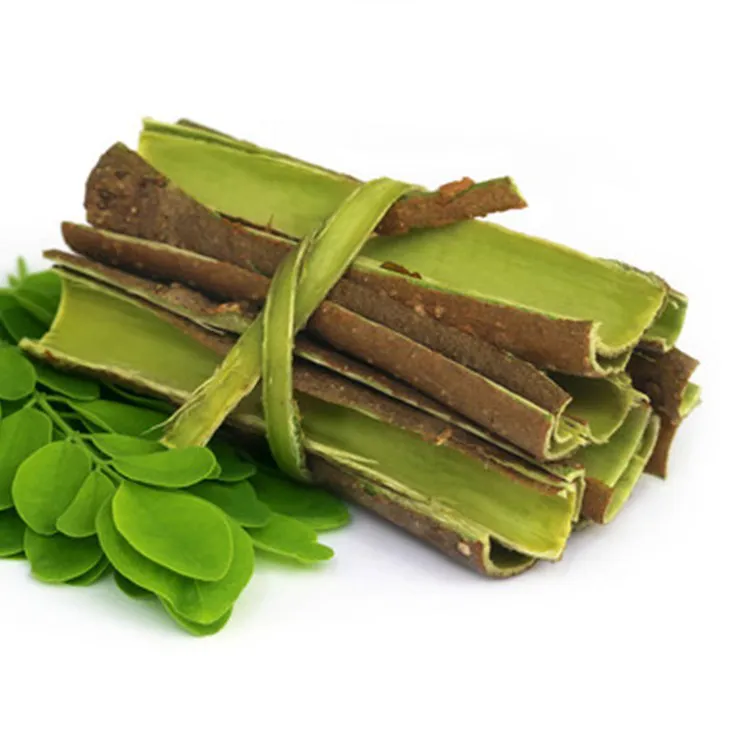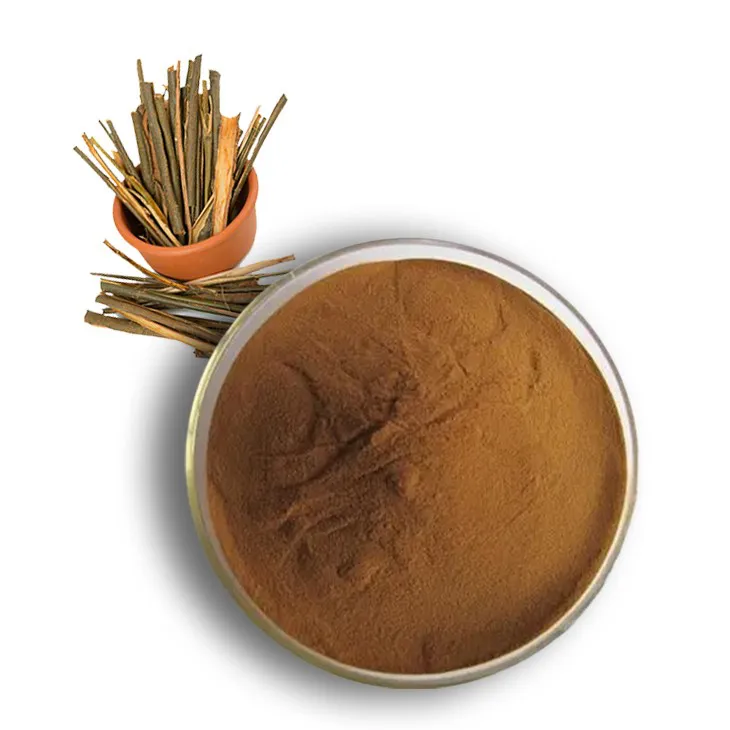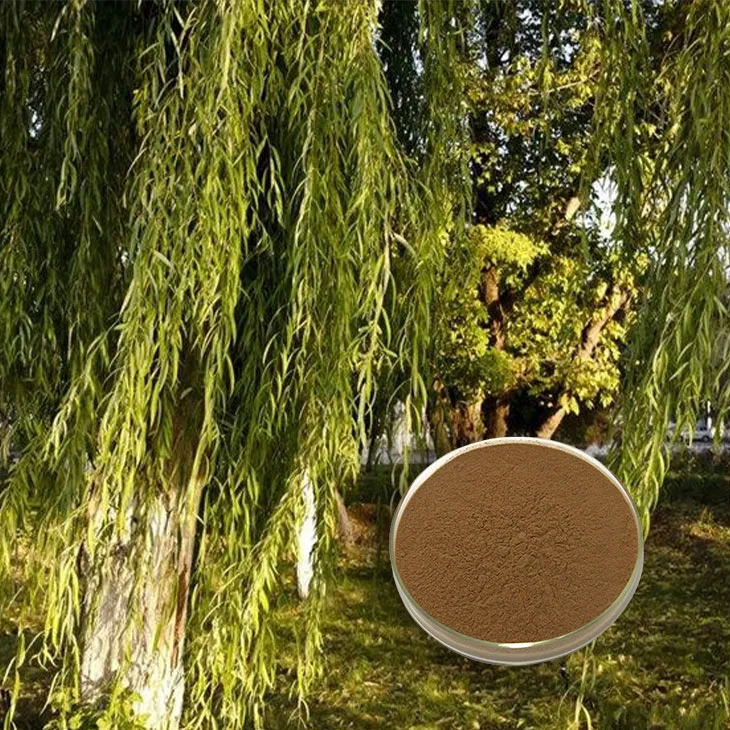- 0086-571-85302990
- sales@greenskybio.com
The process of extracting salicin from white willow bark extract.
2024-11-29

1. Introduction
Salicin extraction from White Willow Bark Extract is a fascinating area of study. White willow bark has been used for centuries in traditional medicine due to its various bioactive compounds, with salicin being one of the most important. Salicin is a phenolic glycoside that has shown potential in the development of new drugs and natural health products. Understanding the extraction process is crucial for obtaining high - quality salicin and exploring its full potential.

2. Pretreatment of white willow bark
2.1 Drying
The first step in the pretreatment of white willow bark is drying. Freshly collected white willow bark contains a significant amount of moisture. Drying helps to reduce the moisture content, which is essential for subsequent extraction processes. There are different drying methods available, such as air - drying and oven - drying. Air - drying is a more natural method, but it may take longer. Oven - drying, on the other hand, can be faster but requires careful control of temperature to avoid damaging the active compounds in the bark.
2.2 Grinding
After drying, the white willow bark needs to be ground into a fine powder. Grinding increases the surface area of the bark, which in turn enhances the extraction efficiency. A fine powder provides more contact points for the extraction solvent to interact with the salicin and other compounds present in the bark. However, care should be taken not to over - grind, as this may cause heat generation and potential degradation of the active compounds.
3. Extraction methods
3.1 Maceration
Maceration is one of the traditional extraction methods. In this method, the ground white willow bark powder is placed in a suitable solvent, such as ethanol or water. The mixture is then left to stand for a certain period, usually several days to weeks. During this time, the solvent penetrates the plant material, dissolving the salicin and other soluble compounds.- Advantages: Maceration is a relatively simple and low - cost method. It does not require complex equipment, making it accessible for small - scale extraction operations. Additionally, it can be used to extract a wide range of compounds simultaneously.
- Disadvantages: It is a time - consuming process. The long extraction time may increase the risk of microbial contamination, especially when using aqueous solvents. Also, the extraction efficiency may not be as high as some other methods.
3.2 Percolation
Percolation involves passing the extraction solvent through a column filled with the ground white willow bark powder. The solvent continuously percolates through the plant material, extracting the salicin as it goes.- Advantages: It generally has a higher extraction efficiency compared to maceration. The continuous flow of the solvent helps to maintain a concentration gradient, which promotes better extraction. It also takes less time compared to maceration.
- Disadvantages: It requires more specialized equipment, such as a percolation column. The setup can be more complex and may require more technical expertise. Additionally, there is a risk of channeling, where the solvent may find a preferential path through the column, resulting in incomplete extraction.
3.3 Soxhlet extraction
Soxhlet extraction is a more advanced and widely used method in laboratories. The ground white willow bark is placed in a Soxhlet extractor, and the solvent is continuously recycled through the plant material.- Advantages: It is highly efficient in extracting salicin. The repeated cycling of the solvent ensures thorough extraction of the compound from the bark. It can also be used with a variety of solvents, depending on the solubility characteristics of the target compound.
- Disadvantages: It requires specialized Soxhlet extraction equipment, which can be expensive. The process also consumes a relatively large amount of solvent, which may pose environmental and cost - related issues.

4. Post - extraction processing
4.1 Filtration
After the extraction process, the resulting mixture contains not only salicin but also other plant debris, undissolved particles, and solvent. Filtration is the first step in post - extraction processing. It helps to remove the larger particles and debris from the extract. This can be achieved using simple filtration methods such as filter paper or more advanced filtration techniques like membrane filtration for finer purification.
4.2 Evaporation
Once the extract has been filtered, the next step is often evaporation. The goal of evaporation is to remove the solvent, leaving behind a more concentrated extract containing salicin. This can be done using rotary evaporators or simple evaporation under reduced pressure. However, care should be taken during evaporation to avoid over - heating, which may cause degradation of salicin.
4.3 Purification
To further enhance the purity of salicin, additional purification steps are often required.- Chromatography: Chromatographic techniques such as column chromatography or high - performance liquid chromatography (HPLC) can be used. These methods separate salicin from other impurities based on differences in their chemical properties, such as polarity or molecular size. Column chromatography is a more traditional method that can be scaled up relatively easily, while HPLC offers higher resolution and is more suitable for analytical and small - scale purification purposes.
- Recrystallization: Recrystallization is another purification method. By dissolving the crude extract in a suitable solvent and then allowing it to slowly crystallize, salicin can be obtained in a more pure form. The choice of solvent is crucial in recrystallization, as it should have a suitable solubility for salicin at different temperatures.

5. Conclusion
The extraction of salicin from White Willow Bark Extract is a multi - step process that involves pretreatment, extraction, and post - extraction processing. Each step plays a crucial role in obtaining a high - quality salicin product. Different extraction methods have their own advantages and disadvantages, and the choice of method depends on various factors such as scale of production, cost, and required purity. Similarly, post - extraction processing is essential for removing impurities and enhancing the purity of salicin. Continued research in this area can lead to more efficient extraction processes and the development of new drugs and natural health products based on salicin.
FAQ:
What is the importance of pretreating white willow bark for salicin extraction?
Pretreating white willow bark is crucial for efficient salicin extraction. It helps to break down the cell walls and make the salicin more accessible for extraction. This can increase the yield of salicin and also improve the quality of the extract. For example, pretreatment methods may remove unwanted substances on the surface of the bark that could interfere with the extraction process, and it can also help in better penetration of the extraction solvent.
What are the main advantages of the maceration method for salicin extraction?
The maceration method has several advantages. It is a relatively simple and inexpensive extraction technique. It allows for a relatively long contact time between the white willow bark and the extraction solvent, which can ensure a more complete extraction of salicin. Also, it does not require complex equipment, making it accessible for small - scale or laboratory - based extractions.
What are the disadvantages of the percolation method in salicin extraction?
The percolation method has some drawbacks. It can be a time - consuming process, especially if the flow rate of the solvent through the white willow bark is slow. There is also a risk of channeling, where the solvent may find preferential paths through the bark, leaving some parts not fully extracted. Additionally, it may require more careful monitoring compared to other methods to ensure consistent extraction efficiency.
How can impurities be effectively removed from the salicin extract?
There are several ways to remove impurities from the salicin extract. Filtration is a common method, which can remove large particles. Chromatography techniques, such as column chromatography, can be used to separate salicin from other components based on their different affinities for the stationary and mobile phases. Another approach is crystallization, where salicin can be selectively crystallized out of the solution while leaving impurities in the mother liquor.
What role does salicin play in the development of new drugs?
Salicin has significant potential in the development of new drugs. It has analgesic and anti - inflammatory properties, which can be explored for the treatment of pain and inflammatory conditions. It can also serve as a starting point for the synthesis of new compounds with improved pharmacological properties. By understanding its extraction from white willow bark, researchers can obtain pure salicin for further studies and drug development.
Related literature
- Salicin: A Review of Its Occurrence, Chemistry, and Pharmacological Activity"
- "Extraction and Purification of Bioactive Compounds from White Willow Bark: A Comprehensive Study"
- "The Potential of Salicin - Rich Extracts from White Willow Bark in Drug Discovery"
- ▶ Hesperidin
- ▶ citrus bioflavonoids
- ▶ plant extract
- ▶ lycopene
- ▶ Diosmin
- ▶ Grape seed extract
- ▶ Sea buckthorn Juice Powder
- ▶ Beetroot powder
- ▶ Hops Extract
- ▶ Artichoke Extract
- ▶ Reishi mushroom extract
- ▶ Astaxanthin
- ▶ Green Tea Extract
- ▶ Curcumin Extract
- ▶ Horse Chestnut Extract
- ▶ Other Problems
- ▶ Boswellia Serrata Extract
- ▶ Resveratrol Extract
- ▶ Marigold Extract
- ▶ Grape Leaf Extract
- ▶ blog3
- ▶ blog4
-
Chinese Saffron Extract Powder Factory.
2024-11-29
-
Cactus Extract Supplier
2024-11-29
-
Optimal Bioavailability of Vitamin C.
2024-11-29
-
Extraction process of wheat germ extract.
2024-11-29
-
100% Pure Natural L - Theanine Powder.
2024-11-29
-
Shikonin
2024-11-29
-
Wheat Germ Extract
2024-11-29
-
Buckthorn bark extract
2024-11-29
-
Ginseng Root Extract
2024-11-29
-
Gynostemma pentaphyllum extract
2024-11-29
-
Red Vine Extract
2024-11-29
-
Uridine-5'-monophosphate Disodium salt
2024-11-29
-
Tongkat Ali Extract Powder
2024-11-29
-
Green Tea Extract
2024-11-29
-
Grape Seed Extract
2024-11-29





















